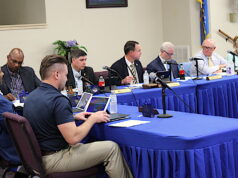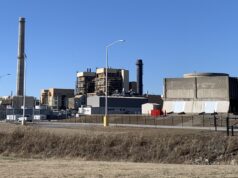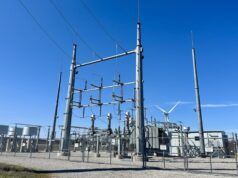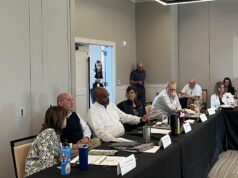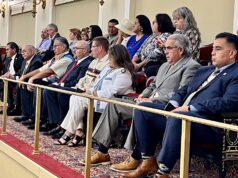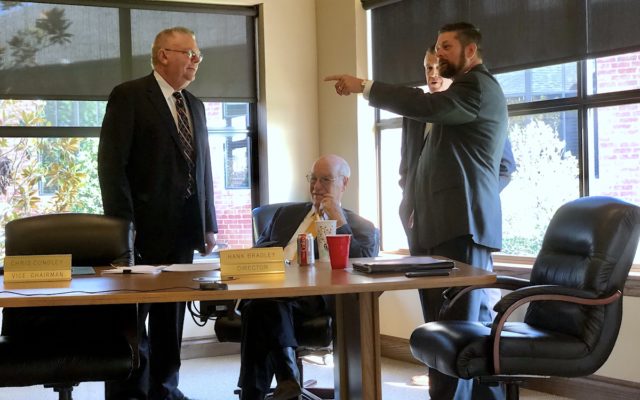

During a meeting this morning, the Oklahoma Development Finance Authority approved contracting with bond counsel, special counsel, disclosure counsel and 18 banks to underwrite the state’s new, mammoth utility ratepayer debt securitization programs.
ODFA could end up issuing about $4 billion in bonds in an effort to limit the interest rate payments that utility companies will pass along to Oklahomans who sustained inflated electricity and gas bills when natural gas prices spiked during February’s historic winter storm.
The utility companies have already taken out private loans to act as bridge or “gap” financing while the state’s new securitization programs are developed. In April, the Oklahoma Legislature passed SB 1049 to create a program to securitize debt owed to unregulated utilities such as, potentially, the Grand River Dam Authority, municipal power authorities and electric co-operatives.
Securitization explained
Securitization refers to the financial practice of pooling contractual debt and selling it on a secondary market. In this instance, the process will play out as follows:
• The Oklahoma Development Finance Authority will issue bonds for purchase;
• Private investors will buy the low-interest bonds;
• The ODFA will pay proceeds to the utility companies and other impacted entities;
• Those impacted entities will pay off their bridge loans they took out to cover their debts to wholesale gas producers and sellers;
• The impacted entities will pay back ODFA over time with money obtained from higher charges to ratepayers, but the charges will be spread out over a longer period of time and at a lower rate.
The Legislature also passed SB 1050 to create a program to securitize utility debts owed to regulated entities like OG&E, PSO-AEP, Oklahoma Natural Gas and CenterPoint Energy.
“These [regulated utilities] make applications to the Oklahoma Corporation Commission stating what their additional fuel costs were that they seek to recoup,” said Mike Davis, president of the ODFA.
The Corporation Commission has 180 days to finish its audit of the regulated utility company’s request and “render a decision on what that dollar amount is that they are able to capture,” Davis said.
“Once the Corporation Commission makes that determination, out of that comes the financing order,” Davis said, noting that OG&E is the only utility to have completed its application so far.
The investor-owned utility company is seeking to recover about $1 billion from ratepayers who purchased electricity during the historic winter storm. Davis said the Corporation Commission has until Dec. 15 to make its decision on OG&E.
In addition, PSO-AEP, ONG and CenterPoint “all have filed their intent to pursue securitization through the Corporation Commission,” said Andrew Messer, state bond advisor in the Oklahoma State Treasurer’s Office.
“The longer this goes, obviously there are carrying costs associated with that. So the quicker that financing can be achieved, it saves ratepayers money,” Messer said.
‘Think of a bond issue as a cake’

Michael Newman, a senior vice president with Hilltop Securities, which ODFA hired as a financial advisor for the new securitization programs, said two of the other regulated utilities are expected to file completed applications with the Corporation Commission this week. Newman said the state regulatory agency has set an October hearing on the OG&E application, after which they could produce a financing order.
“The best way to think of things is if you think of a bond issue as a cake, the financing order is the recipe. So we need the financing order in order to move forward with the bonds,” Newman said. “But these bonds will only be issued if in fact it is determined as required by statute that it is in the best interest of ratepayers and cheaper for the ratepayers.”
Newman and Davis both answered questions from ODFA board members about timelines and what would happen if the state securitization program did not move forward.
“The utilities have secured interim financing. They have large bank loans. They incur interest,” Newman said. “The sooner this is done, the cheaper it is for ratepayers.”
Davis said the Corporation Commission is tasked with determining what amount of increased fuel costs the regulated utilities are authorized to recapture from ratepayers.
“The reason the ODFA is involved in this solution (is that if utilities obtained their own financing) those bonds would fall back to the credit ratings of the utility,” he said. “With this program, this structure and this enacting language, what we are marching toward is a AAA-rated bond, which would provide the absolute lowest interest rate, further saving the ratepayers in that utility cost.”
AARP Oklahoma state advocacy director Chad Mullen told NonDoc after Wednesday’s ODFA meeting that his organization, which represents senior citizens, is monitoring the utility debts and associated filings in front of the Corporation Commission.
“AARP Oklahoma appreciates the Legislature taking steps to minimize the profits utilities might try to recover from ratepayers, especially the many seniors in Oklahoma who live on a fixed income,” Mullen said. “We are focused on reviewing the data provided by the various utilities to the Oklahoma Corporation Commission and want to ensure that only costs that were prudent and reasonably incurred are passed on to consumers.”
Mullen said utility companies were provided weather forecasts about the historic February winter storm, which caused sustained temperatures near zero degrees and yielded a series of disruptions to fuel availability across the Southern Power Pool, which manages electricity distribution among multiple utilities through multiple states.
“The events, while severe, were not necessarily unprecedented, and we want to make sure utilities acted with good stewardship and appropriate planning to mitigate rate impacts before saddling ratepayers with an increase that could last decades,” Mullen said.
Follow @NonDocMedia on:
AG’s Office ‘still investigating’ natural gas prices
When state leaders announced efforts to examine the complicated utility bill problem days after the winter storm, then-Attorney General Mike Hunter said his office was investigating potential criminal violations of the state’s price-gouging statute, among other potential offenses related to skyrocketing natural gas prices.
Hunter has since resigned, but communications director Alex Gerszewski has been retained by new Attorney General John O’Connor.
“We are still investigating, and we really can’t comment past that,” Gerszewski said.
Davis said he is on weekly calls with a variety of state officials, including an assistant attorney general, who are trying to ensure proper creation of the new securitization programs. But Davis said the assistant attorney general has not discussed the criminal investigation.
“Not my monkeys, not my circus,” Davis said.
GRDA, unregulated utilities waiting for details
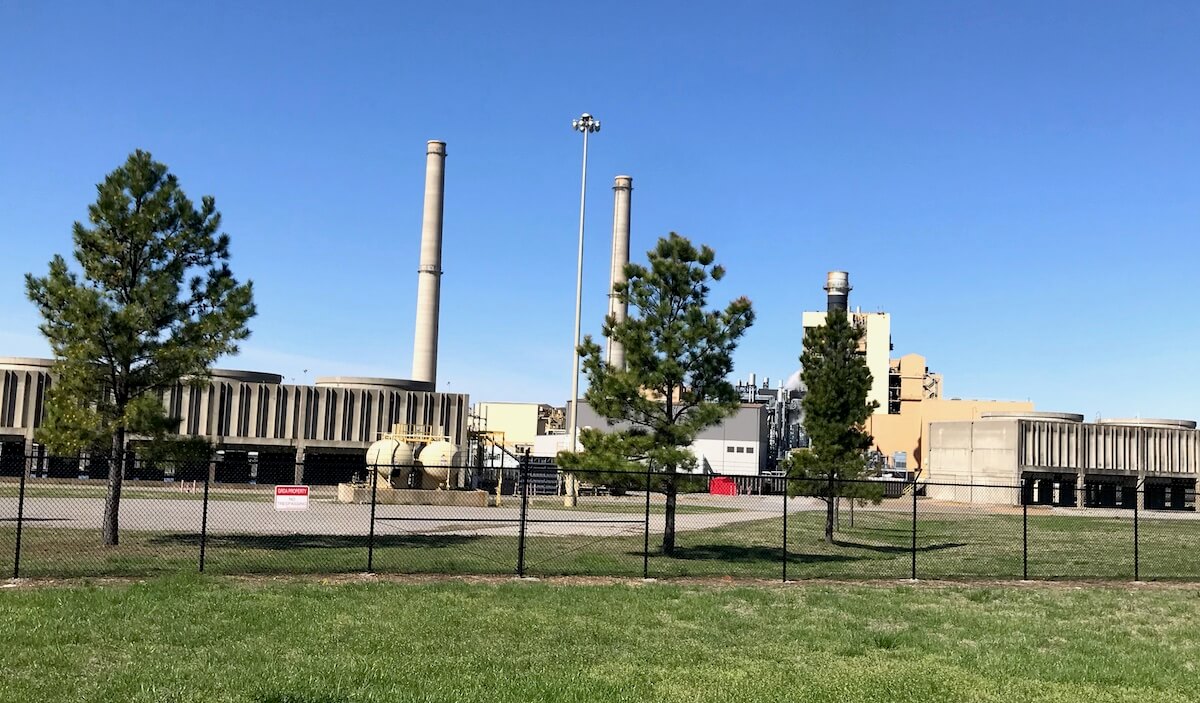
Davis’ non-appropriated conduit bond agency is, however, setting up a tent for what are called the “unregulated” utilities, as directed under SB 1049.
Electric co-operatives, municipal power authorities and other entities may ultimately choose to securitize their debts through this ODFA program once parameters are developed. One of the largest power providers that could take advantage of that securitization program is the Grand River Dam Authority, a non-appropriated state agency that produces and sells electricity to municipal power entities in Oklahoma and surrounding states. GRDA also sells electricity to commercial clients, including companies like Google located within the MidAmerica Industrial Park.
“GRDA can go issue their own bonds. They have a strong credit rating. They don’t necessarily need that program,” Davis said. “As to whether they use it or not, I don’t know.”
John Wiscaver, executive vice president for strategic communications at GRDA, said the public power utility wants to see the details of the ODFA program.
“GRDA is actively exploring the possibility of utilizing SB 1049’s securitization process to recover the extraordinary costs associated with the February winter weather event,” he said. “GRDA’s diverse power generation portfolio, coupled with our prudent weatherization steps taken before and during the event, helped mitigate the negative financial impact for our customers. Securitization may help alleviate any negative impact even further, and GRDA looks forward to working with the Oklahoma Development Financing Authority to explore the options this pathway presents.”
‘There will be international interest’
Davis said he expects the ODFA to be issuing bonds for the securitization programs by the first few months of 2022.
He also told board members about a requirement that the Oklahoma Supreme Court will have to validate any financing plan “for the protection of everybody involved.”
“They typically work pretty well with us. The urgency is there,” Davis said. “We have to have a case to take to them. So when we get the financing order, that’s the point in time that we would use that Oklahoma-based bond counsel.”
On Wednesday, the ODFA approved contracting with two law firms as bond counsel for the securitization programs: The Public Finance Law Group for SB 1050’s regulated utility program, and the Floyd Law Firm for SB 1049’s unregulated utility program.
The ODFA selected the global law firm of Norton Rose Fulbright to serve as special counsel for the regulated utility securitization program. (The unregulated utility program created by SB 1049 does not necessitate a special counsel, Davis said.)
For the disclosure counsel roles, the ODFA selected the law firms of Nixon Peabody for the SB 1050 program and Orrick for SB 1049’s program.
Lastly, the ODFA’s request for proposal for bond underwriting services received responses from 36 financial institutions. Ultimately, the board approved selecting eight banks as lead managers for the regulated utility securitization program:
- Bank of America
- Citi
- JP Morgan
- Wells Fargo
- Morgan Stanely
- Goldman Sachs
- RBC
- Barclays
The agency selected an additional 10 institutions for the co-manager pool:
- Bank Of Oklahoma
- UMB
- D.A. Davidson
- Piper Sandler
- Stifel
- Siebert Williams Shank
- SMBC Nikko
- Academy Securities
- FHN Financial
- Mesirow
“With regard to the size of the financings throughout this entire program — be it three or four issues that we do — long story short, you can’t have enough help to get the bonds sold,” Davis said. “It also creates some competition and some price discovery because when you have co-leads and co-managers, they’re going to provide price views before we go to the market. We’ll see that full range, that full scale, and that’s great information for us and the State Treasurer’s Office. We will get to weigh in on what the pricing structure looks like.”
Davis said he anticipates substantial interest in the massive bond issuances, if they come to fruition.
“As you can appreciate (…) we may be approaching $4 billion or right at it,” he said. “Compared to the $200 million, $15 million, $80 million master lease deals that we do, that’s a lot of bonds to sell. There will be international interest in these bonds as well.”
For the unregulated securitization program, Bank of Oklahoma was selected as the lead manager, with Wells Fargo and Stifel as the co-managers.









